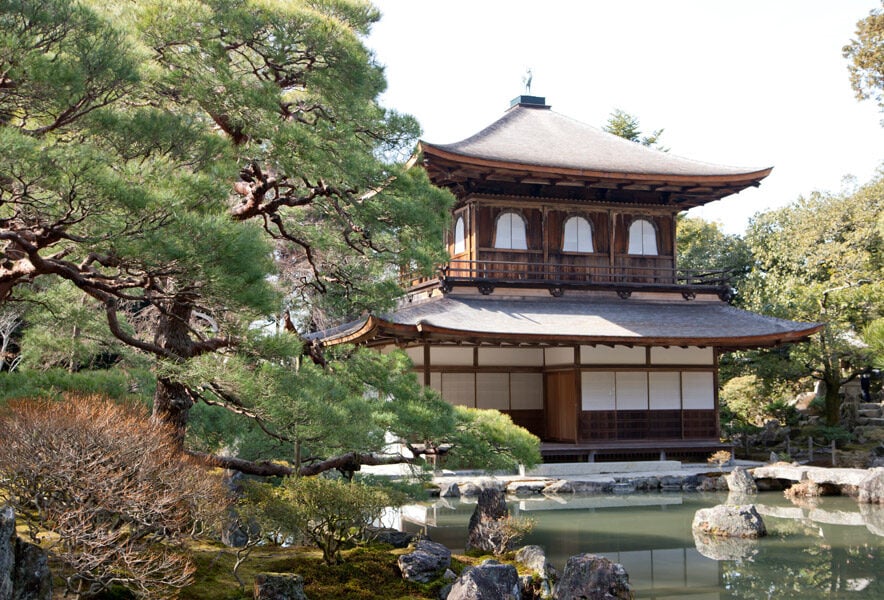The Ginkakuji Temple is located at the foot of Higashiyama (東山, literally meaning "East Mountain") in the ancient capital of Japan, Kyoto.
It is registered as a World Heritage Site as part of the Cultural Properties of Ancient Kyoto and is a popular tourist spot in Kyoto, along with the golden Kinkakuji Temple.
However, despite the name Ginkakuji (銀閣寺, meaning "Silver Pavilion Temple"), it is not silver in color, and many people are surprised to see it in person.
Many people may know the name, but may not know the background and history of the temple.
In this article, I, a resident of Kyoto, will tell you about Ginkakuji, why it was built, and the origin of its name.
History of Ginkakuji Temple
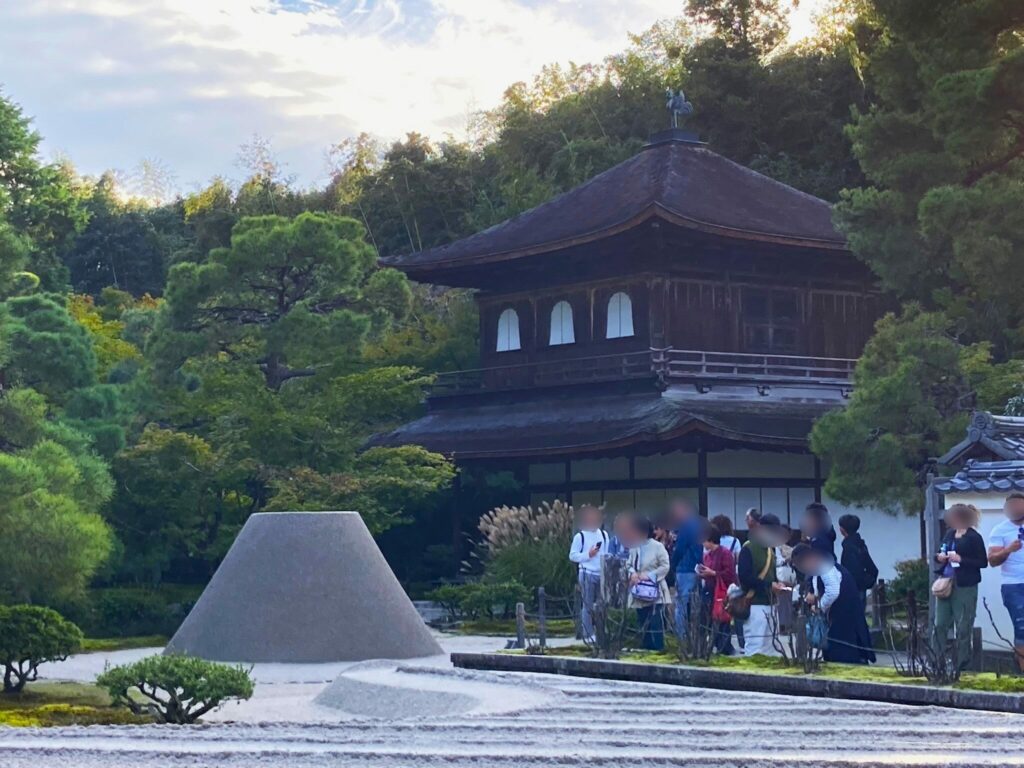
Ginkakuji Temple, located at the foot of Higashiyama in Kyoto, is known as a masterpiece of Higashiyama culture, which flourished in the late 15th century and valued simplicity and refinement. The temple is known as a representative of the Higashiyama culture, which flourished in the late 15th century.
Its official name is Jishoji Temple (慈照寺 meaning "Benevolence Light Temple”).
The Higashiyama Culture is based on the aesthetic senses of wabi-sabi, which are unique to the Japanese.
In the late 15th century, when the Higashiyama Culture flourished in Japan, many works of art and architecture were created with a calm, simple, yet refined beauty.
The word "wabi" (侘び) means "a quiet taste that eschews ornate ornamentation," and expresses the idea of focusing on the spiritual rather than on the place or tools used.
The word "sabi" (寂び) means "old and tasteful," and expresses a feeling of beauty in the flavor that comes with age and the decay of things and life.
The Higashiyama culture, which does not value ornate decoration and splendor, but rather appreciates the beauty of simple and aged things, is a uniquely Japanese sense of beauty. The Ginkakuji Temple, a symbol of the Higashiyama Culture, has become famous as a place worth seeing.
Relationship with Kinkakuji Temple
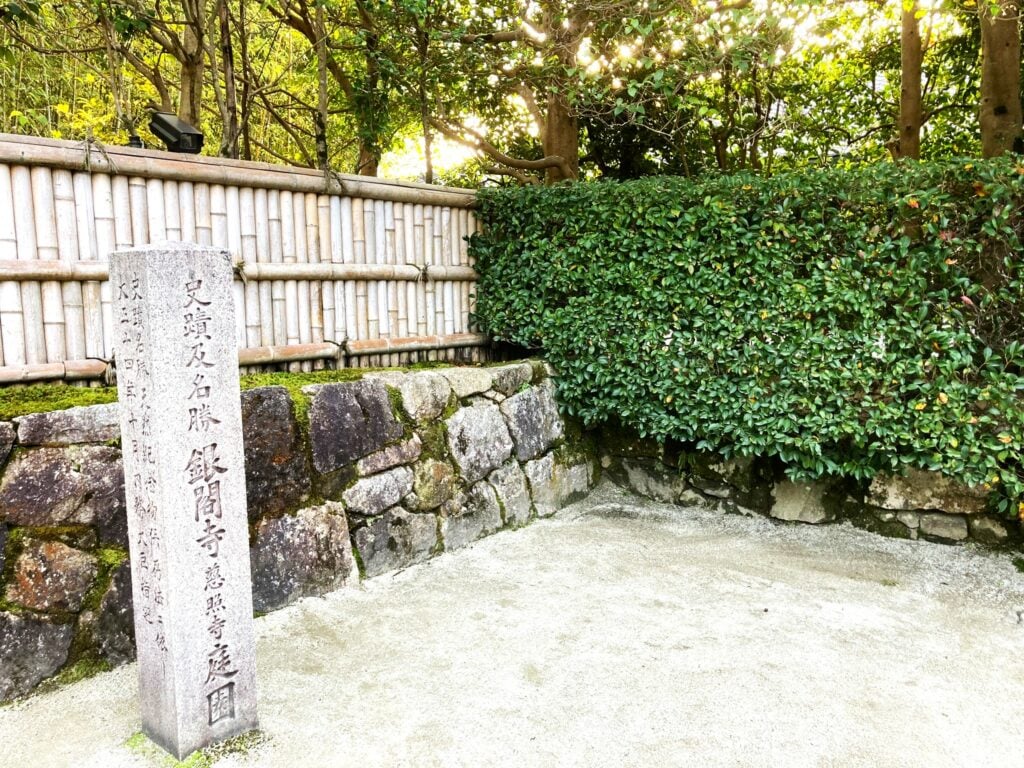
Ginkakuji Temple was founded in 1482 by Ashikaga Yoshimasa, the 8th shogun of the Muromachi Shogunate (1338-1573), who ruled Japan at the time.
Ashikaga Yoshimasa's grandfather was Ashikaga Yoshimitsu, the builder of the gilded Kinkakuji Temple, and Yoshimasa built a temple with a completely different style from his grandfather's.
▼ Kinkakuji Temple
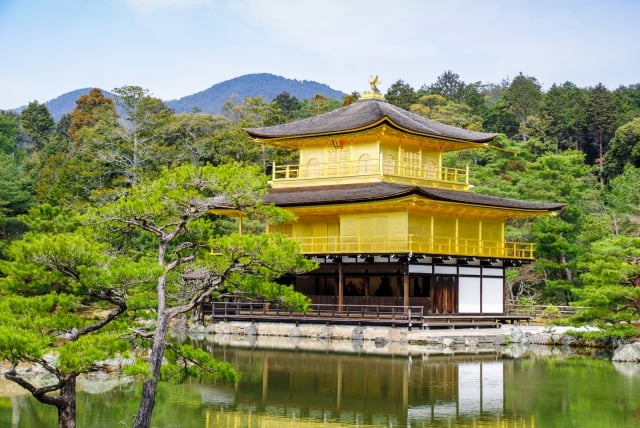
The Ginkakuji Temple is said to have been modeled after Kinkakuji Temple.
There are various theories as to whether silver leaf was originally intended to be applied to the Ginkakuji Temple, but it is commonly believed that they decided not to, due to financial difficulties caused by the period of warfare. It is also commonly speculated that they wanted to create an atmospheric building with a sense of wabi-sabi as a building symbolizing the Higashiyama culture that was popular at the time.
Built against the backdrop of the Onin War
Ashikaga Yoshimasa, who built Ginkakuji Temple, is known as the general who led the Onin War (1467-1477) in Kyoto, which triggered the turbulent period later known as the Sengoku Period.
Yoshimasa is known for his role in shaping the Higashiyama culture, but he lacked political skills and was unable to control the war, so in 1473 he handed over the position of barbarian general to his son and went into hiding.
He gave the Muromachi Palace, the residence of the Shogun, to his son, so he needed a place to live and began to build a villa that would become the Ginkakuji.
Construction of Ginkakuji began in 1482, just after the end of the Onin War.
In 1483, the year after construction began, Yoshimasa moved into the yet-to-be-completed Ginkakuji and began living there.
In spite of the financial difficulties of the Muromachi Shogunate, Yoshimasa continued the construction of the Ginkakuji by increasing taxes and forcing the people to do the labor.
The Ginkakuji Temple is a wonderful place where one can feel the uniquely Japanese sense of beauty of wabi-sabi, but it is beautiful only because of the hard work of the people of that time.
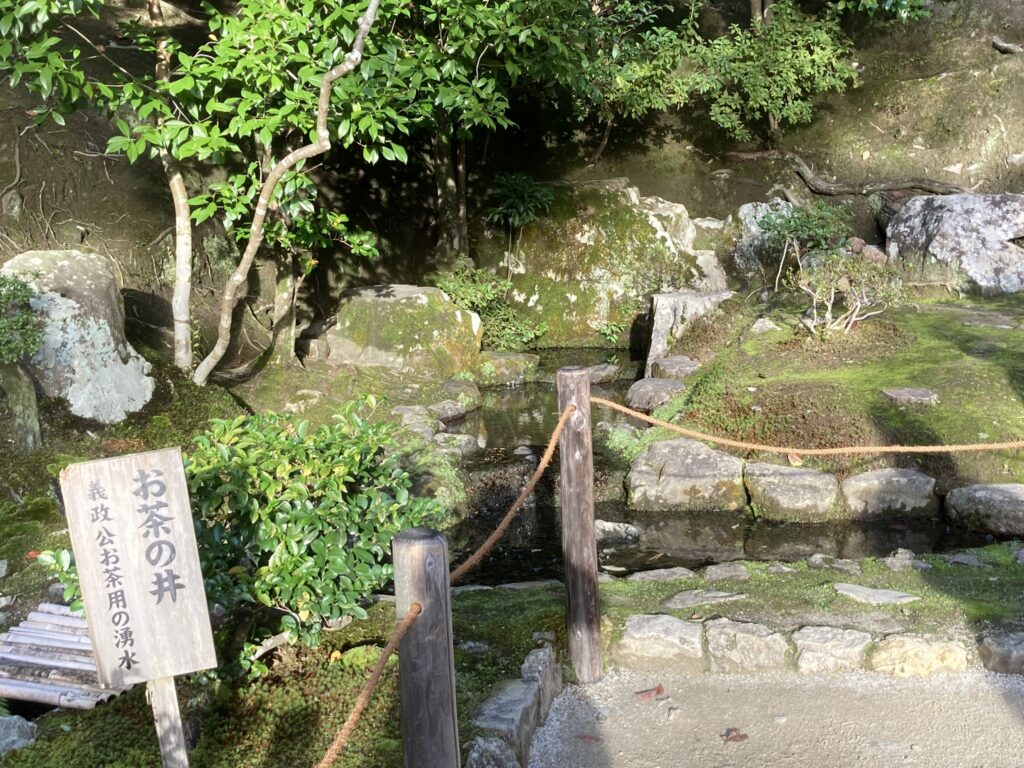
Yoshimasa lived an elegant life surrounded by paintings and calligraphy, and enjoyed the tea ceremony, but he died in 1490 before seeing the completion of the Ginkakuji Temple.
The Ginkakuji, which was built as Yoshimasa's residence, was eventually renamed Jishoji as a temple to mourn his passing.
History of Ginkakuji after Yoshimasa's death
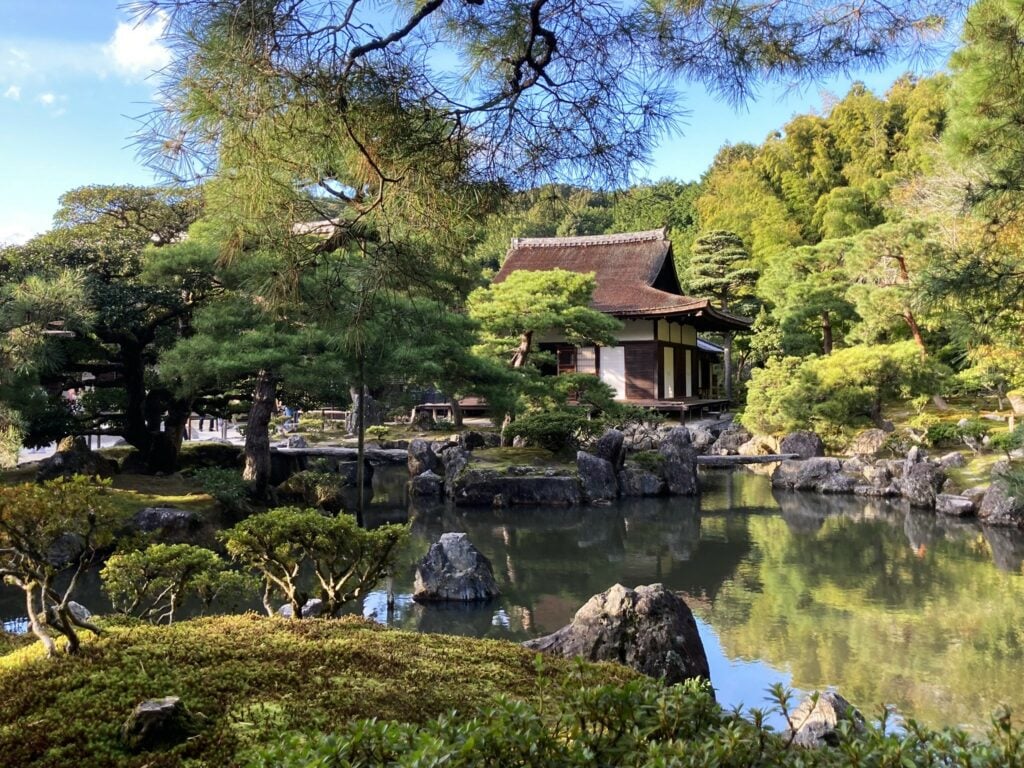
After Yoshimasa's death, Ginkakuji lost its importance along with the decline of the Muromachi Shogunate, and in 1550, the temple was involved in a war and many of its buildings were destroyed by fire.
Later, during the Edo period (1603-1868), with the help of the shogunate of the time, a garden was constructed and many buildings were restored.
In 1994, the temple was registered as a World Heritage Site as a cultural asset of the ancient capital of Kyoto and is now a famous tourist attraction that attracts visitors not only from within Japan but also from all over the world.
Experience the beauty of wabi-sabi, a uniquely Japanese aesthetic, at Ginkakuji Temple!
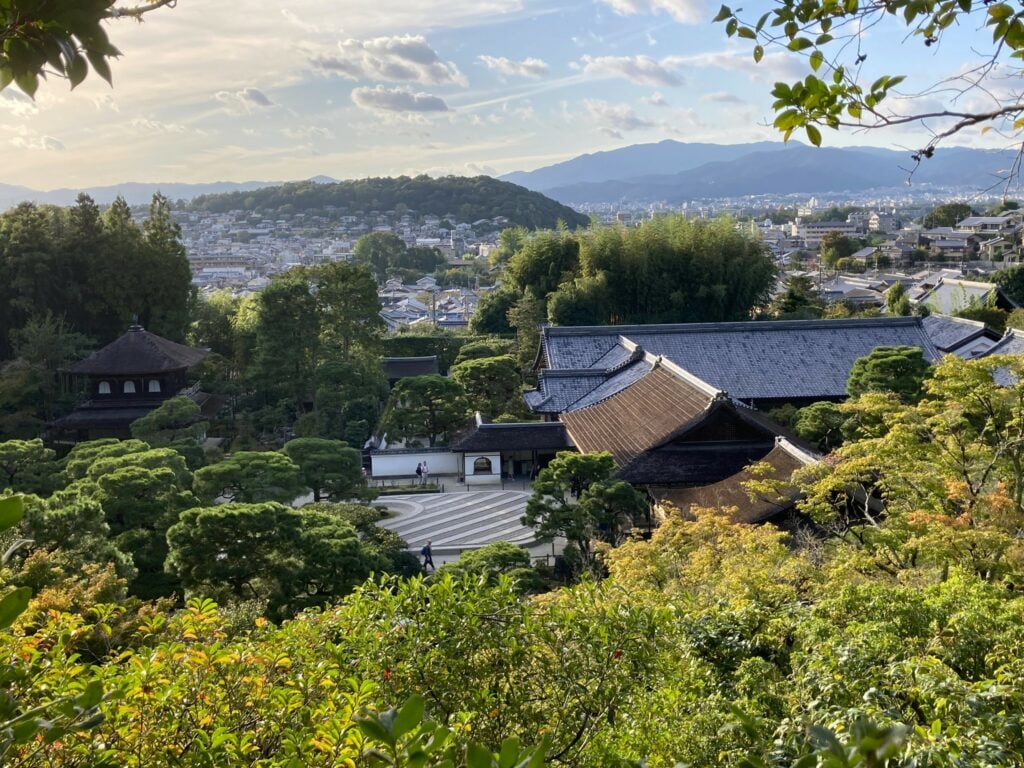
Ginkakuji Temple is one of the most famous sightseeing spots in Japan, and has a different beauty from that of Kinkakuji Temple, which is famous for its splendor and opulence.
Ginkakuji is also famous as a place that symbolizes wabi-sabi, the unique Japanese sense of beauty, so if you are interested in visiting Ginkakuji, please come and see for yourself.
▼ Jishoji Temple / Ginkakuji Temple
Address: 2 Ginkakuji-cho, Sakyo-ku, Kyoto City
Phone:075-771-5725
Access: 5 min. walk from Ginkakuji-mae bus stop or 10 min. walk from Ginkakuji-michi bus stop by city bus.
Hours: Spring (March 1st - November 30th) 8:30 am - 5:00 pm / Winter (December 1st - February 31st) 9:00 am - 4:30 pm
*Open all year round
Admission: Adults (high school students and older): 500 yen, Elementary/junior high school students: 300 yen
https://www.shokoku-ji.jp/en/ginkakuji/

